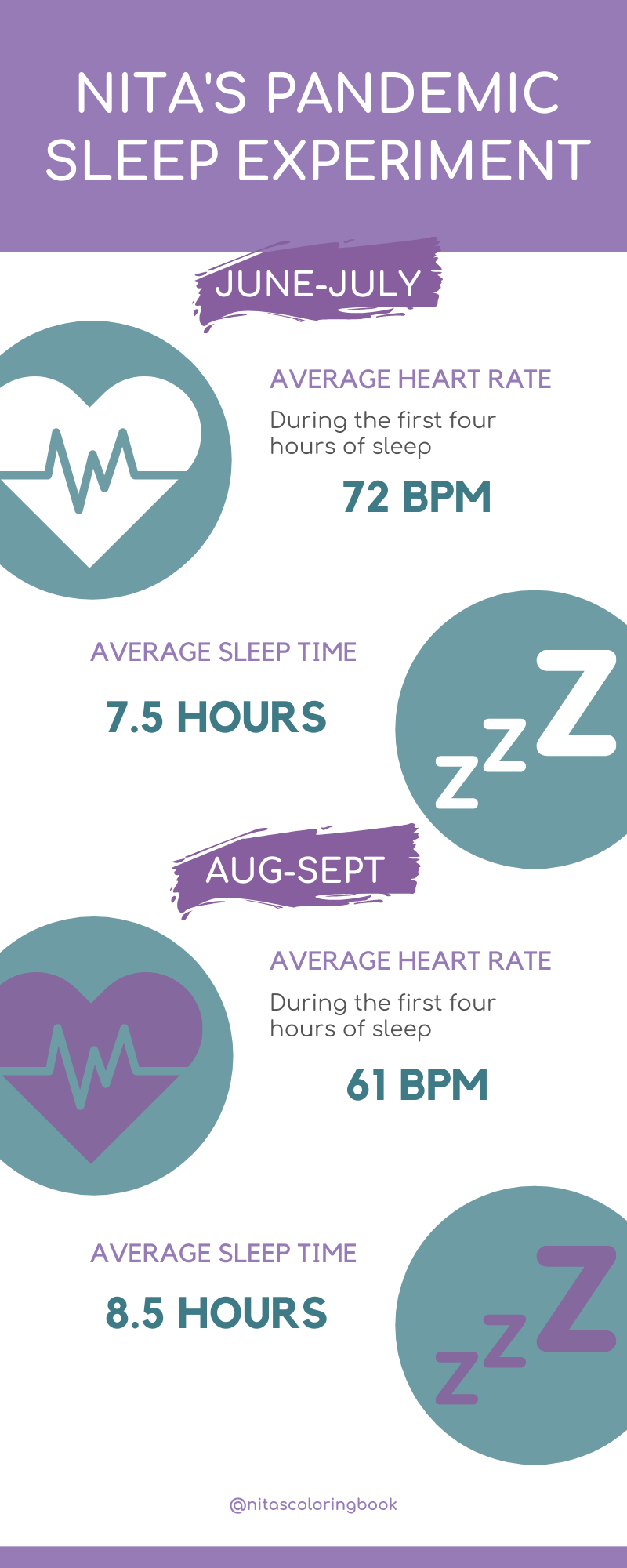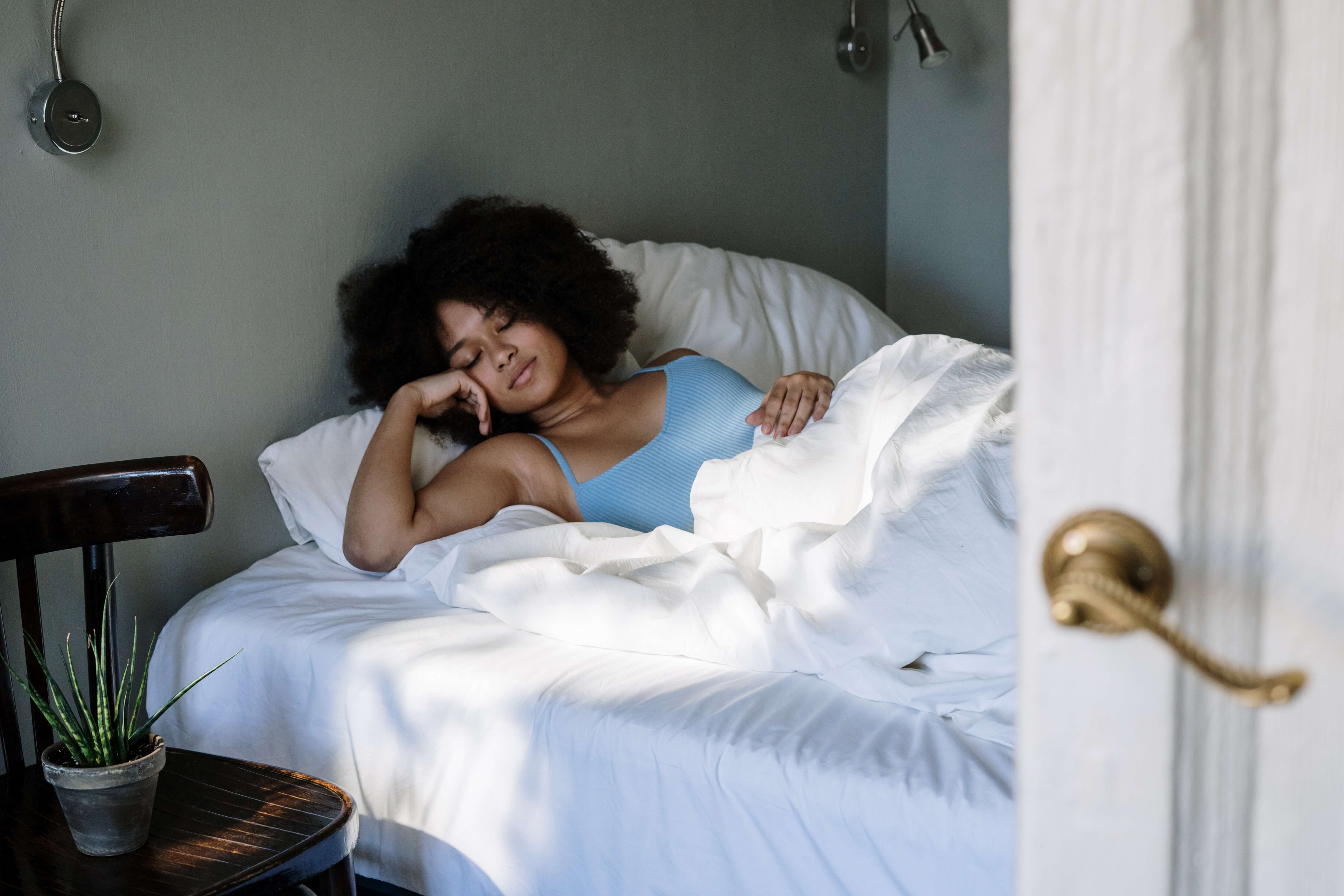Better sleep has become the holy grail, especially now that we are living through such difficult and confusing times. One of the many things that this “new normal” affected was our sleep hygiene –among adding incessant hours of binge-watching and new-recipe-cooking to our days and nights.
I never thought this was possible. I am well-known for my falling-asleep-anywhere-at-anytime superpower. I’m teased by friends and family because of my “sleeping pose”, where I raise my hand in a hook-like shape and use it to rest my face –very similar to the featured image.
However, none of that buzz helped me when the world turned upside down and we all stood still for months. Yet it set the stage for an unintended experiment that resulted in (insert drum roll) better sleep!
How I Went From Zzz to Eek!
Time had little meaning during the quarantine. Like most people, my husband and I stayed up late during random days of the week –even though we had to work at the same time the next morning. We cooked numerous heavy meals and hosted various virtual parties to help us cope. I worked out and practiced yoga constantly to “balance out” all the eating and the alcohol.
My system was all out of whack. I was stressed, hungry, hyper, then full, bloated, and sluggish. Sometimes all of the above. Even when I went to bed at a decent hour I would wake up feeling groggy and restless, but I attributed it all to the pandemic state of mind.
Enter Sleep Tracking
My husband had been wanting to buy a wearable to monitor our workouts and recovery for the longest time. After doing tons of research, we finally got ourselves our tracking toys in June.
I was mostly curious about tracking my sleep data. I was so used to being called a “good sleeper” that I wanted proof. So, we carried on with our pandemic system: Wake up, eat, work, eat, work out, binge-watch, binge-eat, binge-drink, and so forth. All with our gadgets wrapped around our wrists.
Don’t get me wrong, I’m not labeling the above cycle as “bad” or that I should feel guilty about it. One of the things I’ve learned during this time is the importance of being kinder to ourselves and acknowledging that we are all doing the best we can. As the Nutrition Therapist Andrea Clarke beautifully put it, “during this time, we need less criticism of ourselves and more self-compassion.”
While going through this coping routine, I started noticing an interesting pattern on my data: the nights when I was the most stressed out, ate delicious heavy meals, and had a bit too much wine or beer before bed, my Autonomic Nervous System recovery was out of control, resulting on an extremely low recovery score. Meaning, I wasn’t getting quality rest no matter how fast I fell asleep or how many hours I spent in bed.
Take that everyone. I don’t have sleeping superpowers after all.
Now, according to Alan Schwartz, M.D., Director of the Sleep Disorders Center at Johns Hopkins Bayview Medical Center, wearables “measure inactivity as a surrogate for estimating sleep”, instead of measuring sleep directly. So we should take sleep trackers data with a grain of salt.
What Is the ANS?
Our Autonomic Nervous System (ANS) regulates involuntary physiological functions such as heart rate, blood pressure, digestion, body temperature, among many others. It is divided into the sympathetic nervous system (SNS), the parasympathetic nervous system (PNS), and the enteric nervous system (ENS).
Activation of our SNS initiates our “fight-or-flight” response, a state of increased activity and alertness that elevates our blood pressure, heart rate, and glucose release. On the other hand, our PNS is responsible for our “rest and digest” or “conserving and restoring” response, lowering our blood pressure and heart rate, lengthening our breathing, and restarting our digestion. Lastly, our ENS operates independently and is in charge of controlling our digestive processes.
What Does ANS Have to Do With Sleep?
When we are stressed or anxious as a consequence of events such as dealing with our ever-changing world, the sympathetic branch of our ANS activates. This may put us on that “fight-or-flight” mode without us even realizing it, elevating our heart rate, making us hyperaroused, and impairing restorative functions of our parasympathetic system.
What does this mean? In this state, we are more likely to toss and turn at night, have shorter sleep duration and lower sleep quality, as this study shows.
My ANS Experiment Findings
My watch not only tracks sleep data but how well my ANS calms down during the first stages of sleep. The combination of both measurements depicts the above mentioned “recovery score,” showing how well I recuperated during the night. A high ANS score meant my PNS or “rest and digest” was dominant overnight compared to my SNS or “fight-or-flight” response –a.k.a. better recuperation.
After digging deep on my sleep heart rate data, I noticed an intriguing pattern. During the June and July weekends when I felt the most stressed, overate, and consumed copious amounts of alcohol, I had an average heart rate of 72 bpm during the first four hours of sleep, and a sleep time average of 7.5 hours. These measurements resulted in a very poor recovery score, which could explain why I woke up feeling tired and fatigued even after sleeping for almost 8 hours.
For this experiment, I compared that information with my August and September data, after taking a few microsteps toward better sleep (more on this in the next section). Surprisingly, my findings showed an average heart rate of 61 bpm during the first four hours of sleep, and a sleep time average of 8.5 hours.

That’s a 9 bpm and a full hour difference! I’m now waking up feeling more energized and ready to take on the day, which matches my current average recovery score of “good” and “very good”.
How I Went Back to Zzz: Microsteps Toward Better Sleep
Here are some of the steps that made a difference in my sleep to achieve better recovery:
- Follow a sleep schedule: Go to bed and wake up at the same time every day, allowing for at least 8 hours of sleep.
- Maintain a nighttime routine (30 minutes before bed): Including no screen time, a soothing skincare routine, light stretch, wind-down meditation, or reading a book.
- Create the perfect atmosphere: Adjust the temperature, lighting, noise, scents, and bedding to achieve maximum comfort during sleep –Pro tip: Spray lavender essential oil on your pillow.
- Avoid heavy meals or alcohol before bed: This prevents food-related disruptions (digestion), as well as alcohol-related disturbances while we sleep.
Wrapping It Up
Taking care of our sleep hygiene is a journey, like most things in our health and wellness path. Remember that it is ok to not be at your 100%, or to fall off the wagon sometimes, especially during circumstances like the ones we are living in. Be kind to yourself!
Tracking our sleep and ANS patterns can give us an idea of what’s going on so we can reflect, reassess, and make consistent efforts toward a healthier recovery. But if you have major concerns about your sleep, it might be better to call your doctor or run a sleep study.
What steps are you taking to improve your sleep?
Nita Diaz
Nita’s Coloring Book
IG: @nitascoloringbook
Twitter: @nitascolor
Featured image: cottonbro from Pexels


